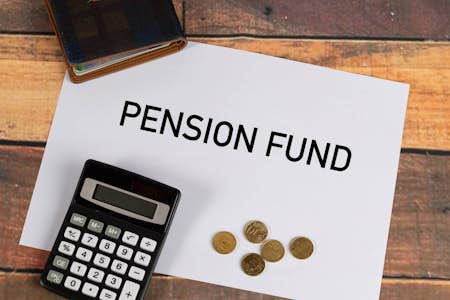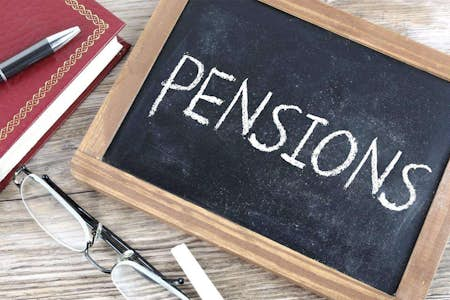A solid grasp of pension paperwork is essential.
Paperwork is moving online, with more providers switching to e-statements rather than paper statements. Instead of opting out of paper statements, you may now need to opt-in if you still wish to receive them.
The typical annual pension statement is being replaced by an online dashboard that lets you check your pension account at any time.
You will still need to deal with pension paperwork when transferring your pension or making changes to your account and personal details. In these situations, you’ll often be asked for a certified copy of identification and proof of address.
Maximise your retirement fund with our panel of pension providers. Click on your chosen provider to get started!
When you will need to provide identification
You’ll likely need to submit identification documentation when you take out a new pension with a new provider. You'll also need to prove your age before your first withdrawal and submit evidence when you change your name or address.
You'll also be asked for ID when you wish to make significant account changes to your pension, like if you want to transfer your pension.
In these situations, as an anti-fraud measure, you’ll usually be asked for a certified document.
The certified document system has been around for decades. If you make changes to your pension, like transferring it to a new provider or withdrawing money for the first time, you'll need to provide identification in the form of a certified document.
What is a certified document or certified copy?
A certified document or certified copy is a copy of a genuine document signed off by someone of 'good standing' as being authentic.
By certifying a copy of your document, you won't have to send an original document, saving it from potentially getting lost in the post.
You usually have the choice of sending either the original document or a certified copy.
Typically requested documents include:
- Passports
- Photocard driving licences
- Birth certificates
- Official governmental letters (e.g. from HMRC or the DWP)
- Bank statements
- Utility bills
The documents requested by your pension provider depend on what you need to prove.
Most of the time, you'll be asked for proof of address and proof of identity, e.g. a bank statement and a driving licence, or a governmental letter and a passport. Some documents (e.g. proof of address) will have to be dated within a certain period, usually the last three months.
How to certify a document
If you change your name, address, or other personal details, you may need to submit new certified documents to your provider.
Some pension providers might offer a digital alternative to a certified document or will allow you to upload them online.
Who can certify these documents?
This varies between providers. Each pension provider will have its own rules here, but most lists contain at least the following professions/positions:
- Doctors or dentists
- Chartered professionals (e.g. Chartered Accountants)
- Teachers or lecturers
- Solicitors or barristers
- Councillors
- Banking professionals
- Minister of religion
The person must not be:
- Related to you
- Living at the same address as you
- In a relationship with you
If you cannot find someone to certify a document for you, some Post Office branches provide a document certification service. Solicitors also offer this service.
How to certify a document
The specific criteria required by pension providers vary, but first of all, you’ll need to photocopy the original document, making sure it’s readable (ideally in colour).
You should write the certification statement on the copy.
Typical certification statements include “certified to be a true copy of the original seen by me”.
It should also include:
- Date and signature
- Name printed under the signature
- Address and telephone number
- Occupation
Witnessing documents
Witnessing a document is slightly different to certification. Someone may have to witness your signature when signing off a change to your pension, like exiting or transferring a plan.
Witnesses must be:
- At least 18 years old
And must not be:
- Living at the same address as you
- Related to you
- In a position where there is a conflict of interest
Taking out a new pension
When you take out a new pension, you’ll need to provide your details, proof of address and identification, and your National Insurance number.
Where to find your National Insurance number
One of the most critical pieces of information you'll need when dealing with your pension is your National Insurance number, often referred to as an NI number.
Every National Insurance number includes two letters, six digits and a final letter; for example, AA 12 34 56 B.
What is a National Insurance number?
Your National Insurance numbers is a unique code that personally identifies your tax and National Insurance contributions, ensuring that these are recorded in your name.
You should only share your National Insurance number with government services, employers, banks, pension providers and ISA providers.
Where is my National Insurance number?
Those born in the UK receive their National Insurance number before their 16th birthday.
Those who’ve moved to the UK from another country should find their National Insurance number on their biometric permits.
If you don’t know if you have a National Insurance number, you can apply for one via this government service. Anyone is eligible so long as they live in the UK and have the right to work in the UK.
You should be able to find your National Insurance number on:
- Your payslip
- P60
- Other tax paperwork and letters from HMRC
If you cannot find your National Insurance number, you can use this government guide to track it down. HMRC will send you your National Insurance number within 15 working days.
What is a pension statement?
A key piece of paperwork you’ll need to familiarise yourself with is your pension statement.
Your pension statements are typically sent annually, but many pension providers also allow you to check your accounts at any time from their website dashboard.
Your annual statements will provide an accurate rundown of your current pension pot, its growth and the performance of your investments, your yearly fee breakdown, pension benefits and options for the future.
Statements for personal and workplace pension
You should always receive an annual pension statement for any personal or workplace pensions.
Your pension statements will provide a full audit of your pension’s performance that year, including a breakdown of any withdrawals you’ve made, the fees you’re paying and the performance of your investments.
Defined contribution pensions (investment-based) will contain information on how your money is invested, how well those investments have performed and how well they’re expected to perform in the future.
Defined benefit (salary-based) pensions are based on your salary. Your pension statement will detail your defined benefit salary and how much you should expect to receive next year.
Your pension statement will usually contain a suite of extra information and guidance, possibly including new terms and updates. You may be given options for switching funds, buying an annuity or taking a lump sum if you haven’t already.
The statement should also include the latest fees and any updated terms or other relevant news. It’s well worth digging through everything that you’re given.
State Pension statements
Anyone eligible for a State Pension will receive a State Pension statement before retirement age.
Your State Pension will vary depending on your National Insurance contributions and how many qualifying years you have. You'll need at least ten qualifying years to earn any State Pension at all; 35 qualifying years will net you the maximum State Pension.
To get an idea of how much you’ll get, you can check your State Pension forecast with this tool.
You can also contact the Future Pension Centre and request a forecast using this tool.
If you want to track your National Insurance record, discovering how many Class 1 and Class 3 National Insurance credits you’ve earned for your State Pension, you can check here. This service also allows you to make voluntary contributions to fill gaps in your National Insurance record.
I’m not receiving any pension statements
If you’re not receiving any pension statements, they might be going to an old address.
You should update your pension providers with your new address when you move. Keeping track of your pensions as you go through life is not always easy, and you may need to track down your old pensions and request statements. If you have lots of smaller pension pots, consider combining old pensions into one newer pension fund.
You can use this government service to track down missing pensions. You can also consult our earlier section on finding lost pensions.
Digital pension paperwork
Many pension providers, especially providers of personal pensions or SIPPs, have online dashboards that provide access to on-demand statements.
Online pension dashboards allow you to track your investments in near-enough real-time. You'll also be able to access your pension benefits and view future projections and pension resources from within your online dashboard.
Pensions are modernising, and digital access is set to become the norm going forward.
The UK government is building a pension dashboard service to combine information on different workplace pensions and the State Pension into one easy-to-use dashboard.
You aren't obliged to use digital dashboards to manage your pensions. However, they provide a handy means to monitor your pensions all year round if you wish.
Everything you need to know about pension paperwork
With pension providers migrating online, the definition of ‘pension paperwork’ is shifting.
Pension savers are now frequently able to access all of their paperwork from one simple online dashboard.
This is not enforced, and you don’t have to use a pension provider’s online service if you prefer not to. If you prefer to receive paper statements and written communication, double-check with your pension provider that you don’t have to ‘opt in’ to this.







